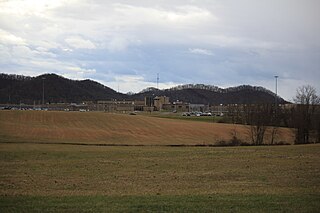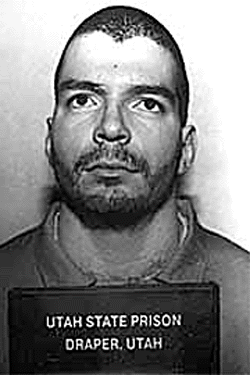
The Green Mile is a 1996 serial novel by American writer Stephen King. It tells the story of death row supervisor Paul Edgecombe's encounter with John Coffey, an unusual inmate who displays inexplicable healing and empathetic abilities. The serial novel was originally released in six volumes before being republished as a single-volume work. The book is an example of magical realism. The subsequent film adaptation was a critical and commercial success.

Nicola Sacco and Bartolomeo Vanzetti were Italian immigrant anarchists who were controversially convicted of murdering Alessandro Berardelli and Frederick Parmenter, a guard and a paymaster, during the April 15, 1920, armed robbery of the Slater and Morrill Shoe Company in Braintree, Massachusetts, United States. Seven years later, they were executed in the electric chair at Charlestown State Prison.

William Francis Kemmler was an American peddler, alcoholic, and murderer, who, in 1890, became the first person in the world to be executed by electric chair. He was convicted of murdering Matilda "Tillie" Ziegler, his common-law wife, a year earlier. Although electrocution had previously been successfully used to kill a horse, Kemmler's execution did not go smoothly.

Capital punishment is a legal penalty in the U.S. state of Ohio, although all executions have been suspended indefinitely by Governor Mike DeWine until a replacement for lethal injection is chosen by the Ohio General Assembly. The last execution in the state was in July 2018, when Robert J. Van Hook was executed via lethal injection for murder.

San Quentin Rehabilitation Center (SQ), formerly known as San Quentin State Prison, is a California Department of Corrections and Rehabilitation state prison for men, located north of San Francisco in the unincorporated place of San Quentin in Marin County.

Michael Bruce Ross was an American serial killer who was executed by the state of Connecticut in 2005. He was the last person executed in Connecticut before the state ended capital punishment in 2012. The Connecticut Supreme Court ruled capital punishment unconstitutional in 2015, converting the sentences of the state's remaining death row inmates to life in prison without parole.
A stay of execution is a court order to temporarily suspend the execution of a court judgment or other court order. The word "execution" refers to the imposition of whatever judgment is being stayed and is similar to an injunction.
Neil Entwistle is an English man convicted of murdering his American wife, Rachel, and their infant daughter, Lillian, on 20 January 2006, in Hopkinton, Massachusetts, United States. He was sentenced to life imprisonment without parole and is incarcerated at Old Colony Correctional Center in Bridgewater, Massachusetts.
Gary Lee Sampson was an American bank robber and later spree killer who killed three people and was sentenced to death by a federal jury in Massachusetts.
Webster Thayer was a judge of the Superior Court of Massachusetts, best known as the trial judge in the Sacco and Vanzetti case.
Burton Wilbur Abbott was a University of California at Berkeley accounting student living in Alameda, California, who was convicted in November 1955 of the rape and murder of 14-year-old Stephanie Bryan.
Emeline Lucy Meaker was the first woman who was legally executed by Vermont. In 1883, Meaker was convicted of and hanged for the murder of her husband's niece Alice in Duxbury, Vermont.

Black Hand extortion was a criminal tactic used by gangsters based in major cities in the United States. In Chicago, Black Hand extortion began around 1900 and had all but faded away by 1970, replaced by the Mafia. The Mafia was initially organized by Johnny Torrio and further organized by Al Capone into the extant Chicago Outfit sometime later. Black Handers in Chicago were mostly Italian men from Calabria and Sicily who would send anonymous extortion notes to their victims emblazoned with a feared old country symbol: the "Black Hand". The Black Hand was a precursor of organized crime, although it is still a tactic practiced by the Mafia and used in organized crime to this day. The Black Hand gangsters of this time period differed from the Mafia by lacking formally structured hierarchies and codes of conduct, and many were essentially one-man operations. Black Hand blackmail was also common in New York, Boston, and New Orleans. Victims would be threatened with being beaten, shot, or have their place of business bombed if they did not pay. Starting around 1909, Black Hand activity was causing difficulties for mob boss Big Jim Colosimo, a former Black Hand gangster and owner of brothels throughout Chicago. Colosimo's life was being threatened with demands for cash to ensure his physical safety. In an effort to fix the problem, he recruited Johnny Torrio, who was a member of New York's Five Points Gang at the time, to come to Chicago. Torrio would later become the famous successor to Big Jim Colosimo and mentor Al Capone as the organized crime ruler of Chicago.

Joseph Mitchell "Yogi" Parsons was an American who was executed for the August 1987 murder of Richard Lynn Ernest. Parsons hitched a ride with Ernest in California and stabbed him to death at a remote rest area in Utah. After assuming Ernest's identity, Parsons continued to insist that he was Ernest when he was later arrested.

Andriza Mircovich was an Austro-Hungarian national of Serb descent. He was the only prisoner ever to be executed by shooting in the US state of Nevada. He had been sentenced to death for the premeditated murder of John Gregovich in Tonopah, Nevada. Mircovich felt that he was owed more money from Gregovich's administration of his late cousin's estate and resorted to settling the matter by stabbing Gregovich to death.

Joseph Arridy was an American man who was falsely convicted and wrongfully executed for the 1936 rape and murder of Dorothy Drain, a 15-year-old girl in Pueblo, Colorado. He was manipulated by the police to make a false confession due to his mental incapacities. Arridy was mentally disabled and was 23 years old when he was executed on January 6, 1939.

Stephen D. Richards or Samuel D. Richards, also known in the media as The Nebraska Fiend, Kearney County Murderer, and The Ohio Monster, was an American serial killer who confessed to committing a total of nine murders in Nebraska and Iowa between 1876 and 1878.

Robert Francis Burns was an Irish Australian murderer and probable serial killer. He was hanged at Ararat Gaol in September 1883, convicted of the murder of Michael Quinlivan near Wickliffe in western Victoria. After Burns' death the hangman made a sensational claim that the prisoner had stated to him, prior to the execution, that he had murdered eight people in total, five in Victoria and three in New South Wales. The revelation prompted speculation in the colonial press, attempting to identify other murder victims with whom Burns had been associated.











